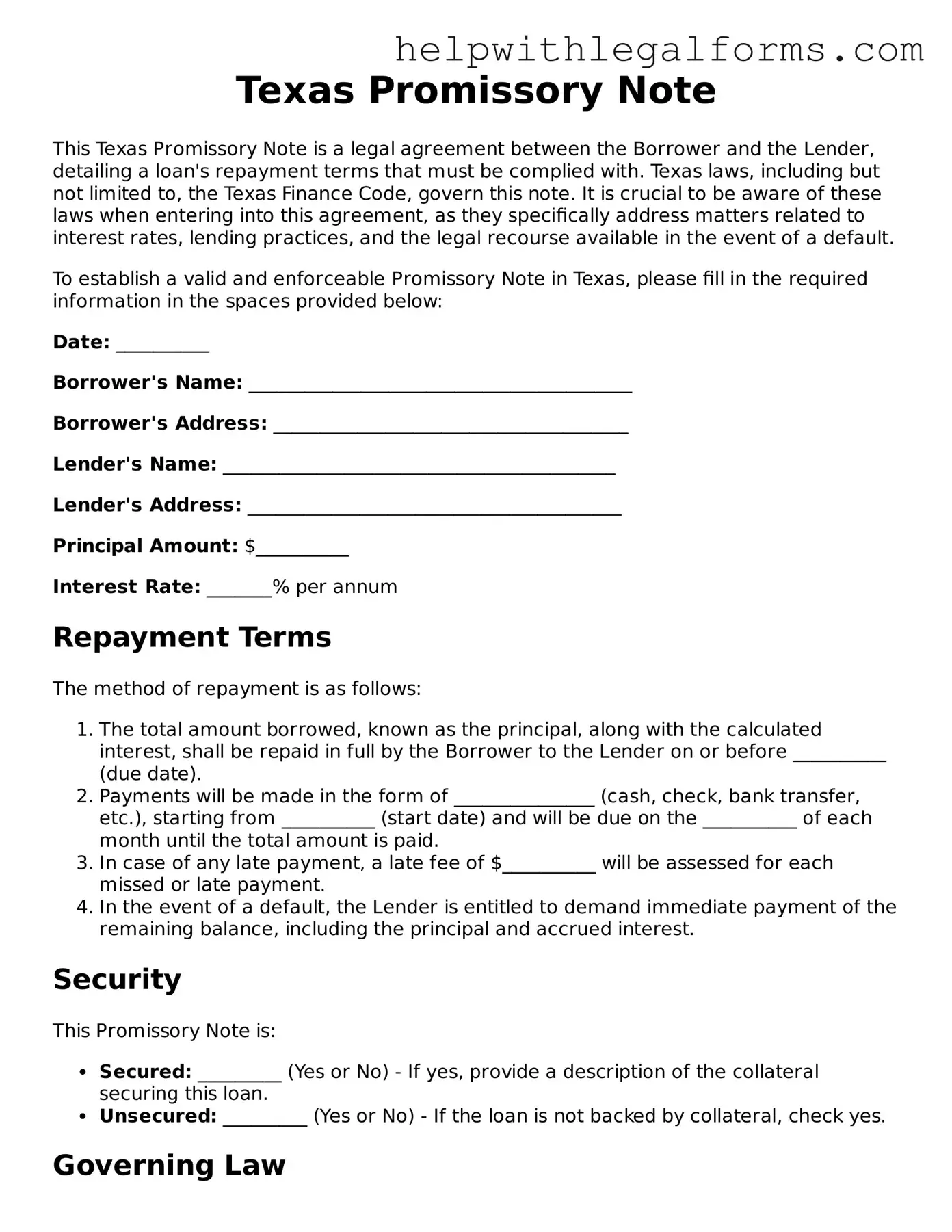Texas Promissory Note
This Texas Promissory Note is a legal agreement between the Borrower and the Lender, detailing a loan's repayment terms that must be complied with. Texas laws, including but not limited to, the Texas Finance Code, govern this note. It is crucial to be aware of these laws when entering into this agreement, as they specifically address matters related to interest rates, lending practices, and the legal recourse available in the event of a default.
To establish a valid and enforceable Promissory Note in Texas, please fill in the required information in the spaces provided below:
Date: __________
Borrower's Name: _________________________________________
Borrower's Address: ______________________________________
Lender's Name: __________________________________________
Lender's Address: ________________________________________
Principal Amount: $__________
Interest Rate: _______% per annum
Repayment Terms
The method of repayment is as follows:
- The total amount borrowed, known as the principal, along with the calculated interest, shall be repaid in full by the Borrower to the Lender on or before __________ (due date).
- Payments will be made in the form of _______________ (cash, check, bank transfer, etc.), starting from __________ (start date) and will be due on the __________ of each month until the total amount is paid.
- In case of any late payment, a late fee of $__________ will be assessed for each missed or late payment.
- In the event of a default, the Lender is entitled to demand immediate payment of the remaining balance, including the principal and accrued interest.
Security
This Promissory Note is:
- Secured: _________ (Yes or No) - If yes, provide a description of the collateral securing this loan.
- Unsecured: _________ (Yes or No) - If the loan is not backed by collateral, check yes.
Governing Law
This Promissory Note will be governed under the laws of the State of Texas, regardless of the conflict of laws principles.
Signatures
This document, once signed by both the Borrower and the Lender, is a testimony to their agreement to the terms prescribed herein.
Borrower's Signature: _______________________________
Date: __________
Lender's Signature: ________________________________
Date: __________
